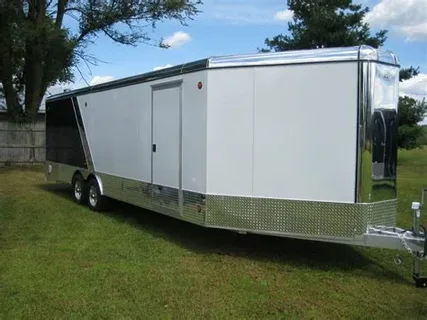In today’s fast-evolving technological landscape, artificial intelligence (AI) and robotics, including innovations like the Giant Decomposing Robot, stand at the forefront of industry transformation. These technologies are not only shaping the future but are actively revolutionizing various sectors by enhancing efficiency, productivity, and innovation. This blog explores how AI and robotics are making significant strides across industries, highlighting their impact, and offering insights into the future of these groundbreaking technologies
The Rise of AI and Robotics
-
Definition and Brief History of AI and Robotics
- Artificial Intelligence (AI) refers to the simulation of human intelligence in machines that are programmed to think and learn. It encompasses various technologies, including machine learning, natural language processing, and computer vision.
- Robotics involves the design, construction, and operation of robots. These machines are capable of performing tasks autonomously or semi-autonomously, often mimicking human actions.
The journey of AI and robotics began in the mid-20th century with theoretical concepts and rudimentary machines. Over the decades, advancements in computing power and algorithm development have propelled these fields forward, leading to sophisticated AI systems and versatile robots.
-
Recent Advancements in AI and Robotics Technology
- AI has seen rapid advancements in deep learning, enabling machines to recognize patterns and make decisions with remarkable accuracy. Notable breakthroughs include GPT-4 for natural language understanding and advanced image recognition systems.
- Robotics technology has evolved with improvements in sensors, actuators, and materials, allowing robots to perform complex tasks with high precision. Innovations like collaborative robots (cobots) that work alongside humans and autonomous drones for delivery and surveillance exemplify these advancements.
-
Key Statistics Demonstrating Their Growth
- The global AI market is projected to reach $1.4 trillion by 2029, growing at a CAGR of 38.1% from 2024 to 2029.
- The robotics industry, valued at approximately $44.4 billion in 2023, is expected to grow to $73.3 billion by 2028, with a CAGR of 10.5%.
2. Transforming the Healthcare Industry
-
AI-Driven Diagnostics and Treatment Plans
- AI algorithms are enhancing diagnostic accuracy through image analysis and pattern recognition. For instance, AI systems can identify early signs of diseases such as cancer from medical imaging with higher precision than traditional methods.
- AI is also being used to develop personalized treatment plans based on patient data, leading to more effective and tailored healthcare solutions.
-
Robotics in Surgery and Patient Care
- Surgical robots, like the da Vinci Surgical System, allow for minimally invasive procedures with greater precision and control. These robots have revolutionized surgery by reducing recovery times and improving outcomes.
- Robots are also being employed in patient care settings, assisting with mobility, monitoring vital signs, and providing companionship to patients.
-
Case Studies of Successful Implementations
- The use of robotic-assisted surgery has significantly improved surgical precision and patient recovery times at institutions like Cleveland Clinic and Johns Hopkins Hospital.
- AI-driven diagnostic tools, such as IBM Watson for Oncology, are helping doctors provide personalized cancer treatment recommendations.
3. Revolutionizing Manufacturing and Production
-
Automation in Manufacturing Processes
- Automation has streamlined manufacturing processes, reducing the need for manual labor and increasing production speed. Robotics are used for tasks such as welding, painting, and assembly, enhancing efficiency and consistency.
-
Robotics in Assembly Lines and Quality Control
- Robots are integral to assembly lines, performing repetitive tasks with high accuracy. They are also used in quality control to inspect products for defects and ensure adherence to standards.
-
Benefits: Increased Efficiency, Reduced Costs, and Improved Safety
- The integration of robotics in manufacturing has led to significant cost savings by minimizing labor costs and reducing errors. Additionally, robots enhance workplace safety by performing dangerous tasks and reducing human exposure to hazardous conditions.
-
Examples from Leading Companies
- Companies like Tesla and General Electric have implemented robotics extensively in their manufacturing processes, resulting in higher productivity and reduced production costs.
4. Enhancing the Retail Sector
-
AI in Inventory Management and Customer Service
- AI systems are optimizing inventory management by predicting demand and automating stock replenishment. Chatbots and virtual assistants powered by AI are enhancing customer service by providing instant responses and personalized recommendations.
-
Robotics for Warehousing and Logistics
- Robotics are revolutionizing warehousing operations with automated systems for picking, packing, and sorting. Companies like Amazon use robots to streamline their logistics and improve delivery efficiency.
-
Personalization of Customer Experiences Through AI
- AI is used to analyze customer data and provide personalized shopping experiences, from tailored product recommendations to targeted marketing campaigns.
-
Notable Examples and Case Studies
- Amazon’s use of Kiva robots in its warehouses has significantly improved order fulfillment speed and accuracy, setting a benchmark for logistics efficiency.
5. Innovations in Agriculture
-
AI-Powered Crop Management and Monitoring
- AI-driven technologies are transforming agriculture by providing insights into crop health, soil conditions, and weather patterns. These tools enable farmers to make data-driven decisions, optimizing yield and resource usage.
-
Robotics in Planting, Harvesting, and Maintenance
- Robotics are being used for planting, harvesting, and maintaining crops. Examples include autonomous tractors and drones for monitoring crop health and applying treatments.
-
Examples of Tech Advancements in Smart Farming
- Companies like John Deere and Trimble are leading the way in smart farming technologies, using AI and robotics to enhance precision agriculture and improve farm efficiency.
6. The Future of Transportation
-
Autonomous Vehicles and Drones
- Autonomous vehicles are reshaping transportation with self-driving cars and trucks that promise to improve safety and reduce traffic congestion. Drones are also being used for delivery services and aerial surveillance.
-
AI in Traffic Management and Route Optimization
- AI systems are being employed to manage traffic flow and optimize routes, reducing travel times and enhancing transportation efficiency.
-
Impact on Logistics and Personal Transportation
- The rise of autonomous vehicles and drones is expected to transform logistics by streamlining supply chains and reducing delivery times. For personal transportation, these technologies promise greater convenience and safety.
7. The Role of AI and Robotics in Education
-
Personalized Learning Through AI
- AI is enabling personalized learning experiences by adapting educational content to individual student needs and learning styles. This approach enhances student engagement and improves learning outcomes.
-
Robotics for Interactive and Hands-On Learning Experiences
- Educational robots are used to provide interactive learning experiences in subjects like coding, science, and engineering. These robots help students develop practical skills and foster creativity.
-
Examples of Educational Robots and AI Tools in Classrooms
- Robots like LEGO Mindstorms and educational AI platforms such as DreamBox are making learning more engaging and effective in classrooms around the world.
8. Ethical Considerations and Challenges
-
Privacy Concerns and Data Security
- The widespread use of AI and robotics raises concerns about data privacy and security. Ensuring that personal and sensitive information is protected is crucial as these technologies become more integrated into our lives.
-
Job Displacement and the Need for Reskilling
- The automation of tasks and processes can lead to job displacement. Addressing this challenge involves investing in reskilling and upskilling programs to prepare the workforce for new opportunities created by AI and robotics.
-
Ensuring Ethical Use of AI and Robotics
- Ethical considerations include ensuring that AI systems are used responsibly and transparently. Developing guidelines and regulations to govern the use of these technologies is essential for maintaining public trust.
9. Future Trends and Predictions
-
Emerging Technologies in AI and Robotics
- The future of AI and robotics is expected to include advancements in quantum computing, bio-inspired robotics, and more sophisticated AI algorithms. These technologies will further enhance the capabilities of AI and robotics.
-
Potential Future Applications and Industries Impacted
- AI and robotics are likely to impact a wide range of industries, from space exploration to environmental monitoring. Future applications may include advanced healthcare diagnostics, autonomous systems for disaster response, and smart cities.
-
Expert Opinions and Forecasts
- Experts predict that AI and robotics will continue to evolve rapidly, driving innovation and creating new opportunities across various sectors. Staying informed about these trends will be crucial for leveraging their benefits.
Conclusion
AI and robotics are undeniably reshaping industries, driving innovation, and enhancing efficiency across various sectors. From healthcare to manufacturing, retail, and beyond, these technologies are making profound impacts on how we work and live. As we move forward, embracing these advancements and addressing associated challenges will be key to maximizing their potential.
FAQs
What are some real-world examples of AI and robotics in action?
Real-world examples include AI-driven diagnostic tools in healthcare, autonomous vehicles in transportation, and robotics in manufacturing and warehousing.
How are AI and robotics expected to evolve in the next decade?
AI and robotics are expected to evolve with advancements in quantum computing, more sophisticated algorithms, and broader applications across various industries.
What industries are most likely to benefit from AI and robotics?
Industries such as healthcare, manufacturing, retail, agriculture, transportation, and education are poised to benefit significantly from AI and robotics innovations.




